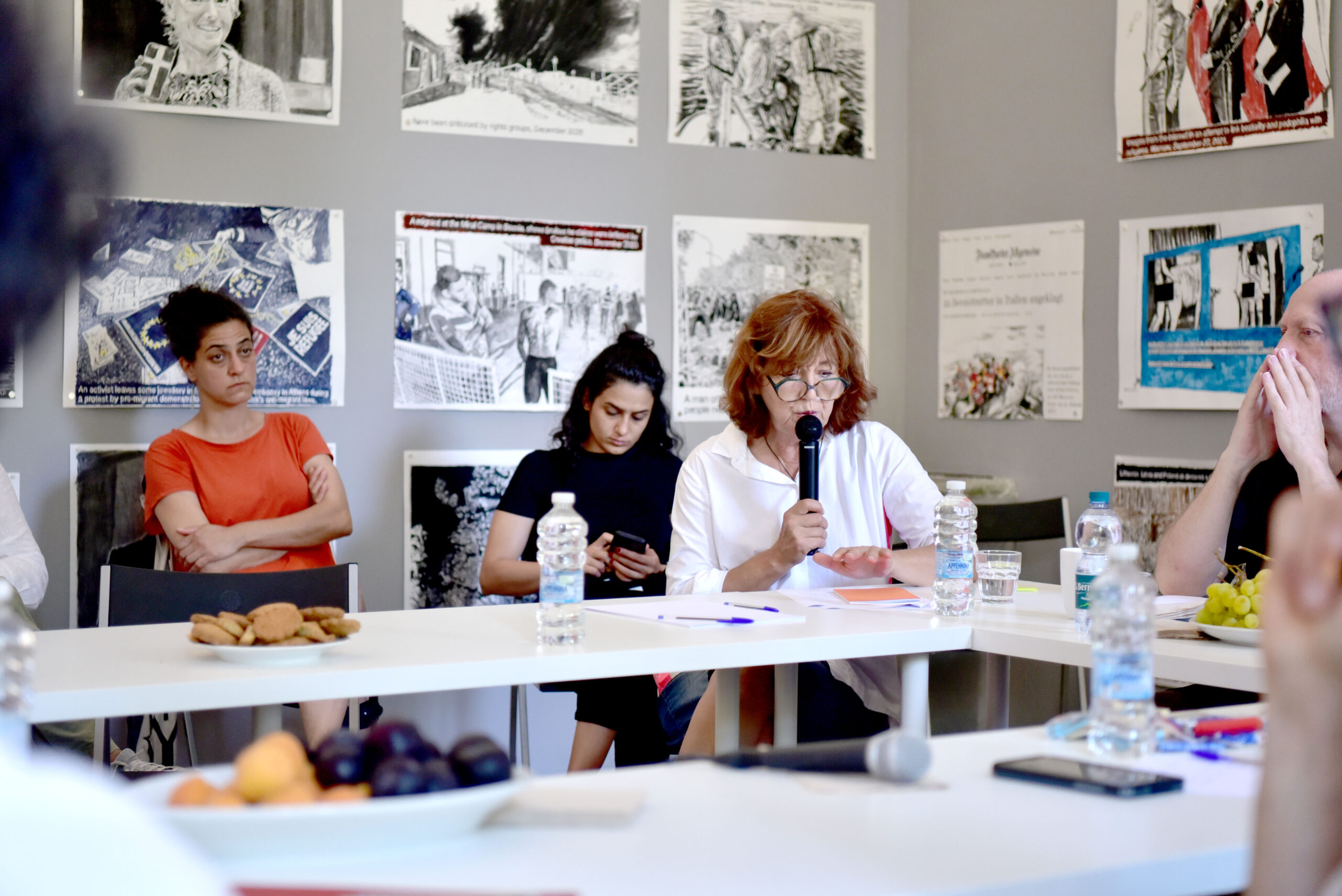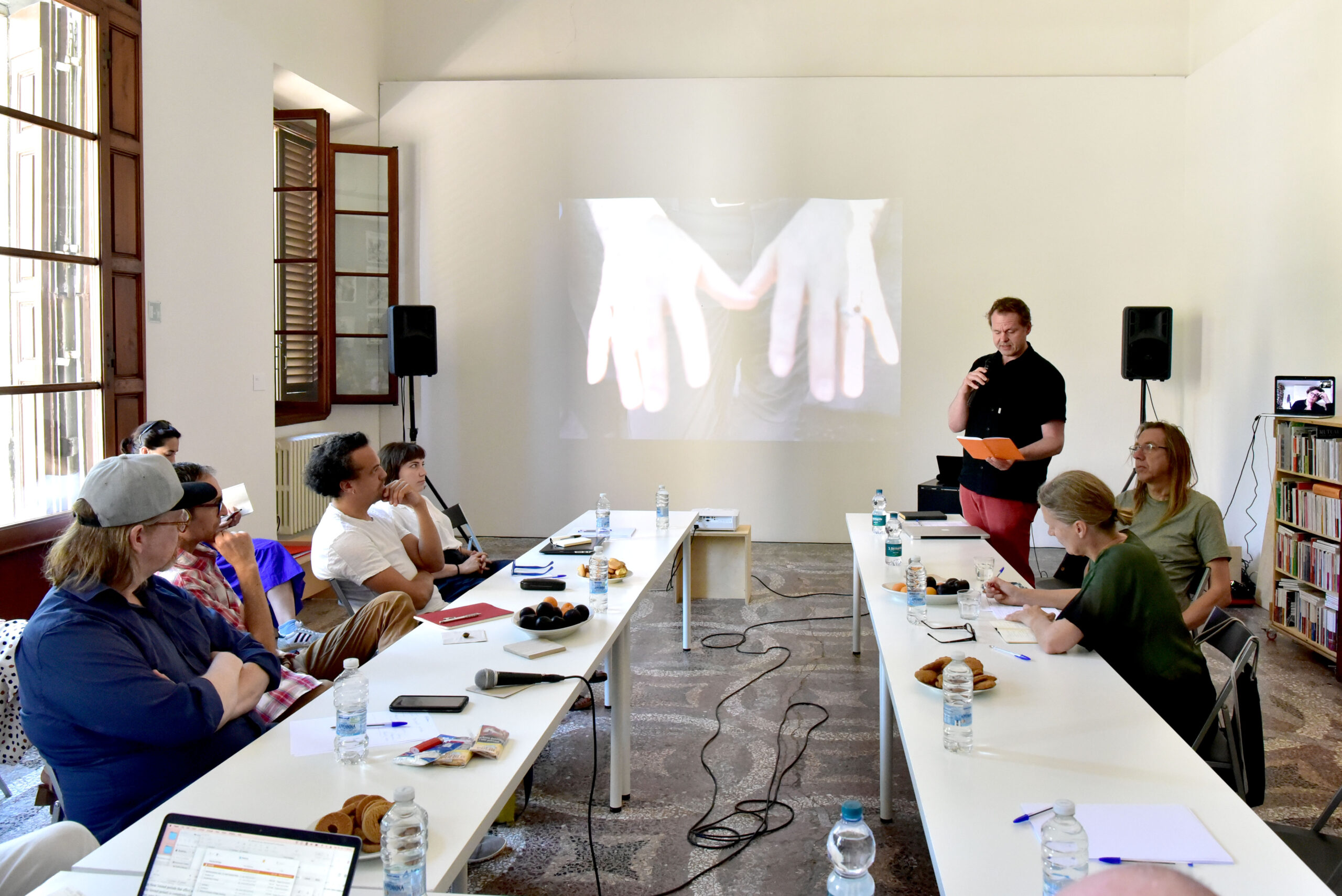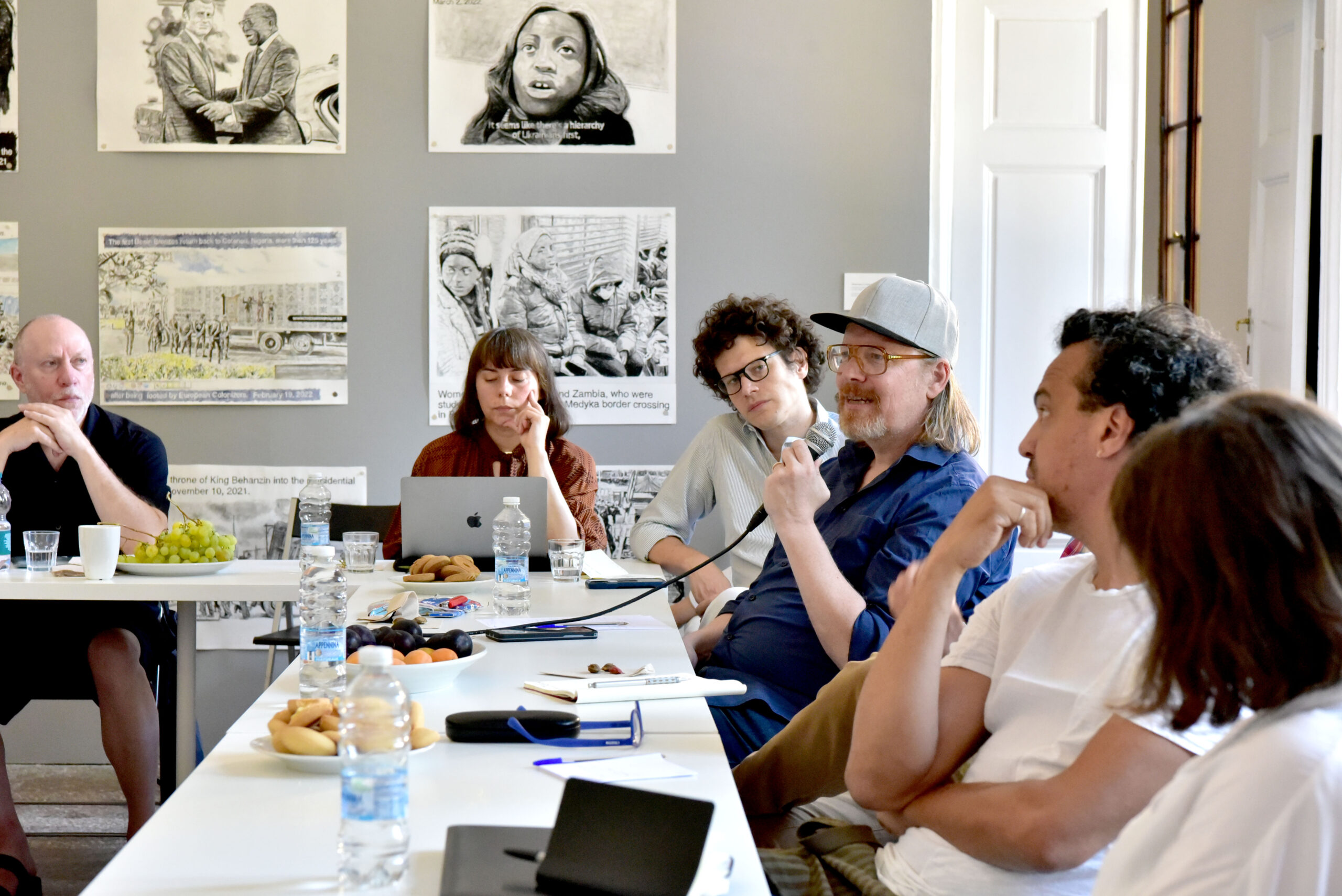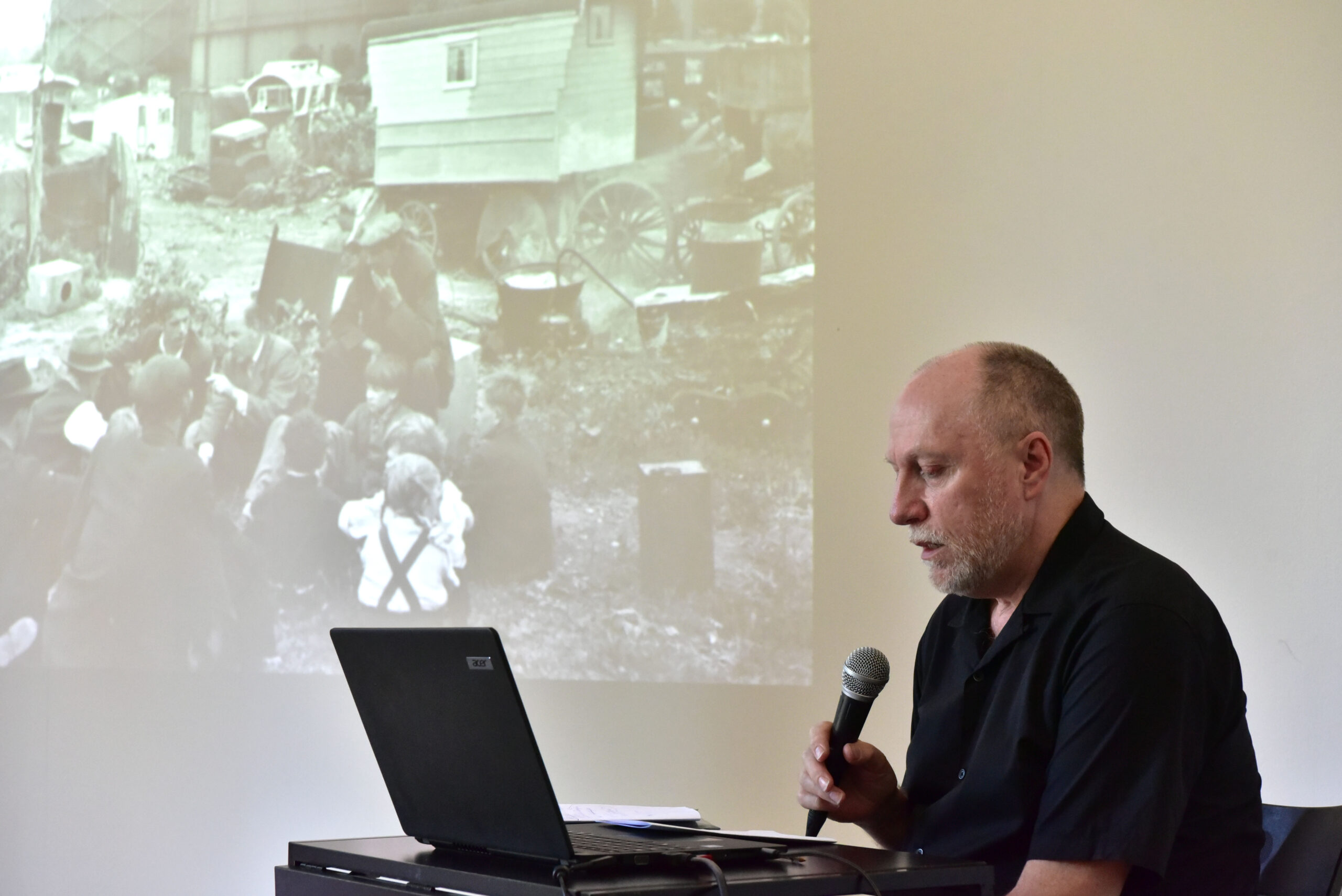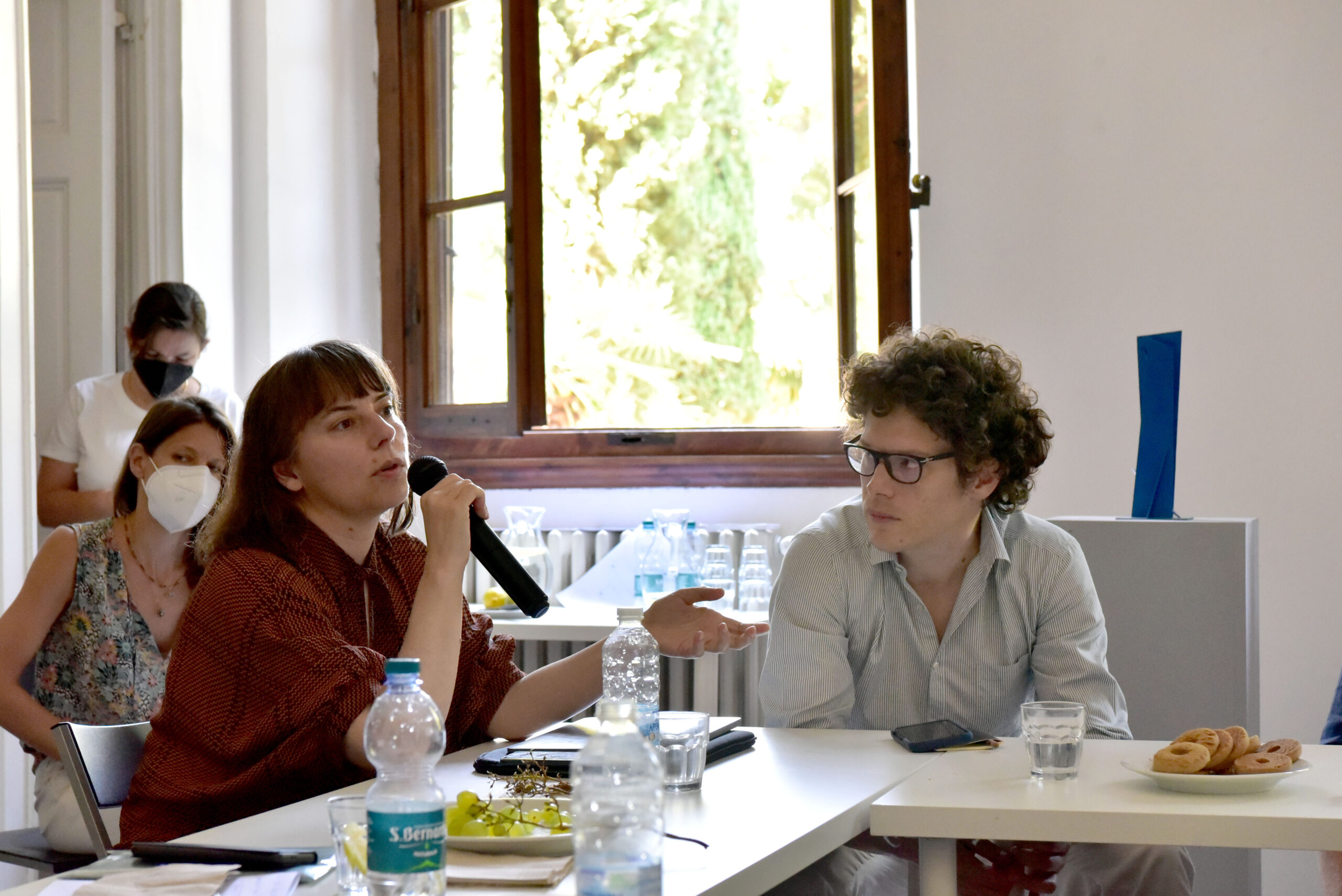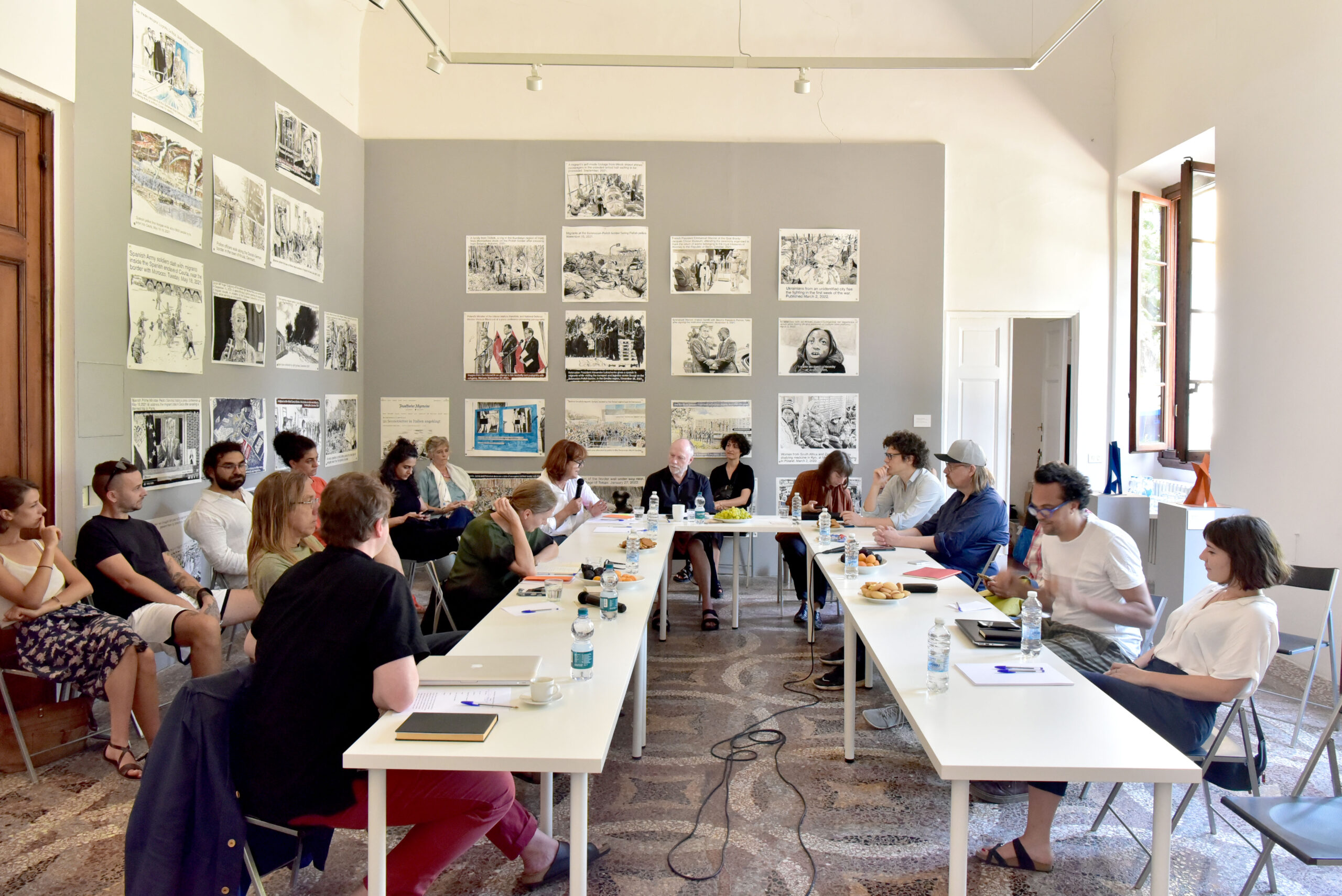
With Ronny Heiremans & Katleen Vermeir (Brussels), Jeremiah Day (Berlin), Ana Texeira Pinto (Berlin), Jörg Heiser (Berlin), Daniel Baker (London), Lucrezia Calabrò Visconti and Justin Randolph Thompson (ART WORKERS ITALIA)
The relationship between state policy and artistic license is a tense and often unspoken one. In the Federal Republic of Germany, it is currently being debated whether culture should be enshrined as a state objective in the Basic Law. This would mean that the state must protect and promote cultural institutions, art, scientific research and teaching, education and artistic activity. But what does that mean? And how nationally is art negotiated then? What ‘protection’ do artists need from the state? And could this end up in a state of dependency and subjection? What is the role of legal agreements for artists? When is a non-German artist considered ‘worthy of protection’ and ‘worthy of promotion’? What rights does the state have in publicly funded institutions? These are questions that come up again and again in concrete terms in the practice of an artists‘ house. Not to mention artistic freedom of entry, which is often blocked by opaque visa practices. Or the need to find project funding for transnational collaborations that are not dictated by political programs …
How do artists and the state negotiate with each other in the first place? How are artists heard? In Italy, the first autonomous and impartial association Art Workers Italia was founded in 2020, to provide legal, fiscal and administrative advice and protection to art workers and to make the art sector more inclusive, sustainable and transparent. In Egypt, after the suppression of the so-called ‘Arab Spring’, many artists have since left the country to save their skins, in the direct literal sense. William Wells, who founded the legendary Townhouse Gallery in downtown Cairo in the 1990s, is no longer allowed to enter Egypt. The gallery was closed again and again after 2012. Artists from Herat in Afghanistan contacted us with cries for help after the Taliban’s transfer of power last summer. Despite numerous letters from us, it is not possible to see whether they were ever put on the German list of people who deserve protection. They have been hiding now for many months to save their lives. And how and where do contemporary artists of Roma heritage, as a non-state community, articulate their need for protection and support? How can a trans-national artistic solidarity be formed?
Ronny Heiremans & Katleen Vermeir, artists, co-founders of Jubilee, Brussels
Jeremiah Day, artist, Berlin
Ana Texeira Pinto, writer and cultural theorist, Berlin; lecturer at the DAI (Dutch Art Institute)
Kerstin Stakemeier, writer and educator; professor of art theory and -mediation at the Academy of Fine Arts, Nuremberg
Daniel Baker, artist/curator, London
Jörg Heiser, author, curator, director of the Institut Kunst im Kontext (art in context) UdK Berlin
Lucrezia Calabrò Visconti, independent curator and co-founder of CLOG, Turin (ART WORKERS ITALIA)
Justin Randolph Thompson, artist, curator and co-founder and director of the Recovery Plan
